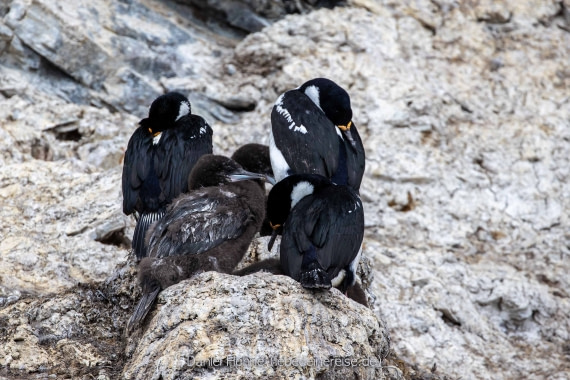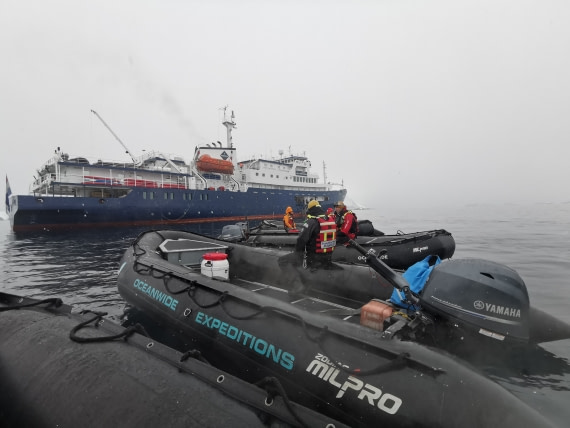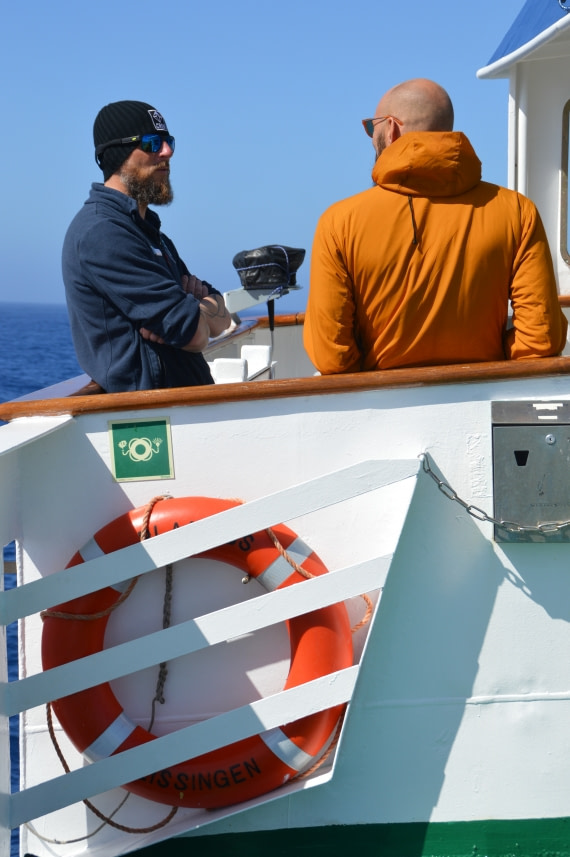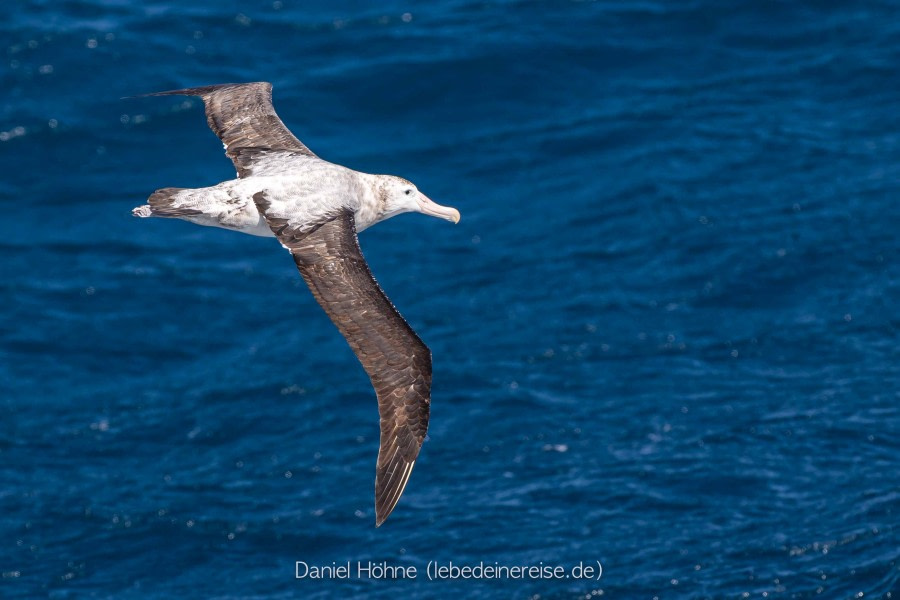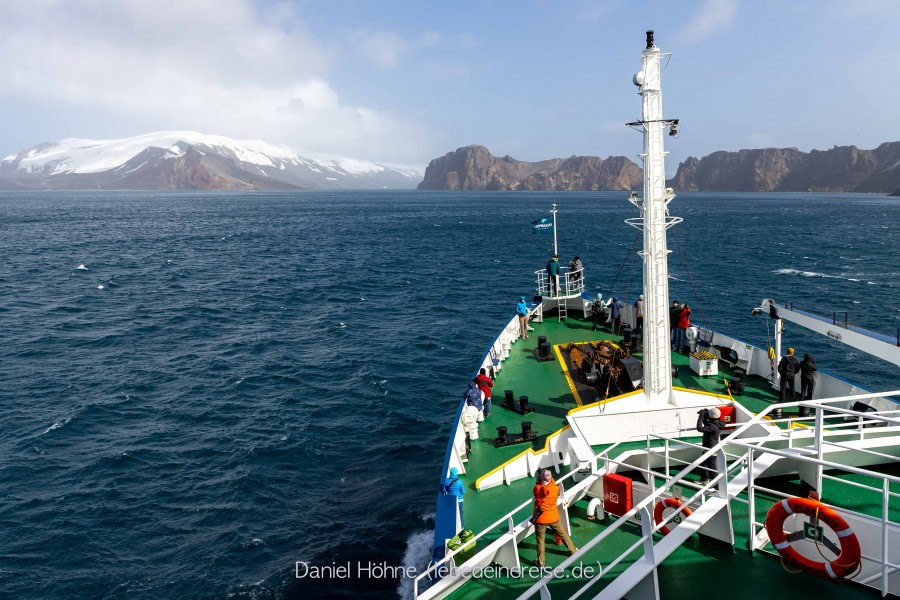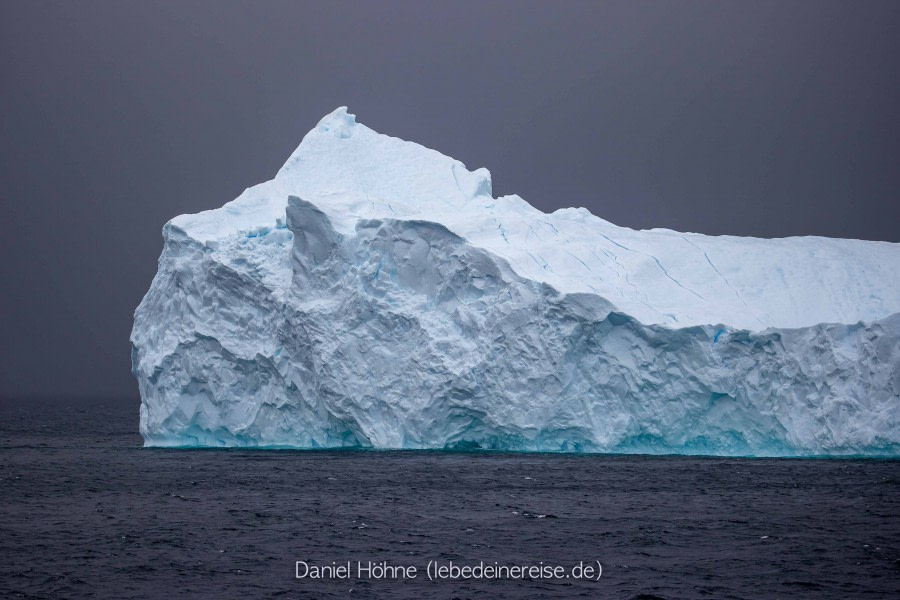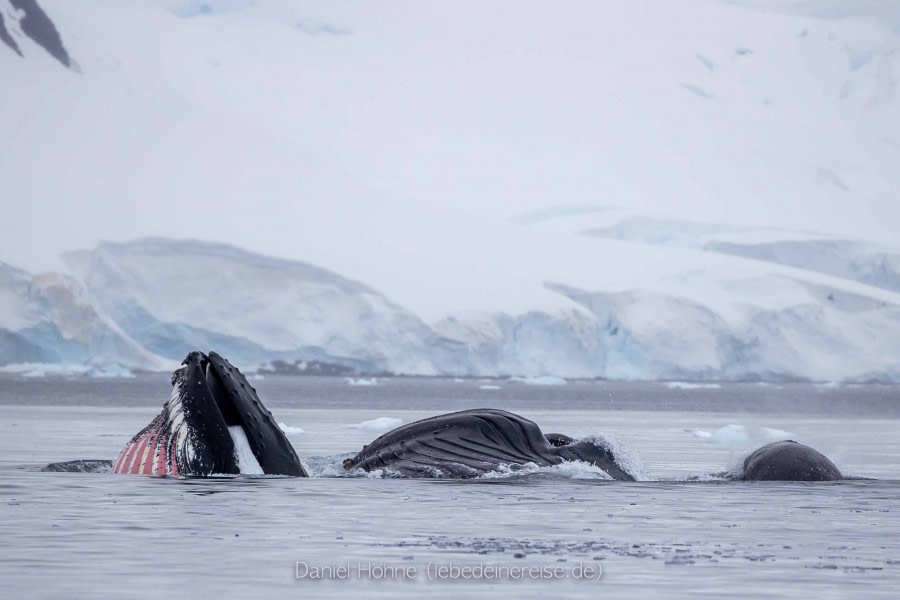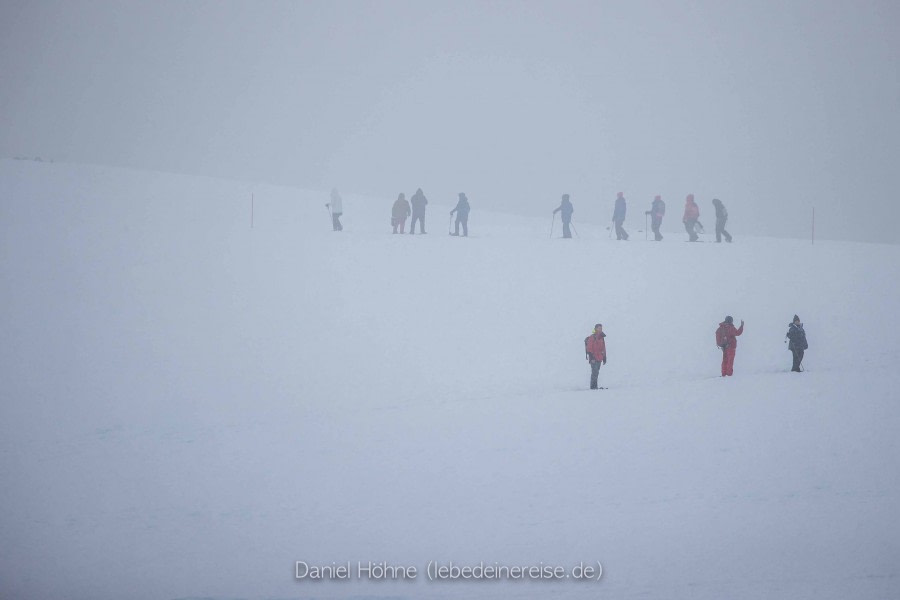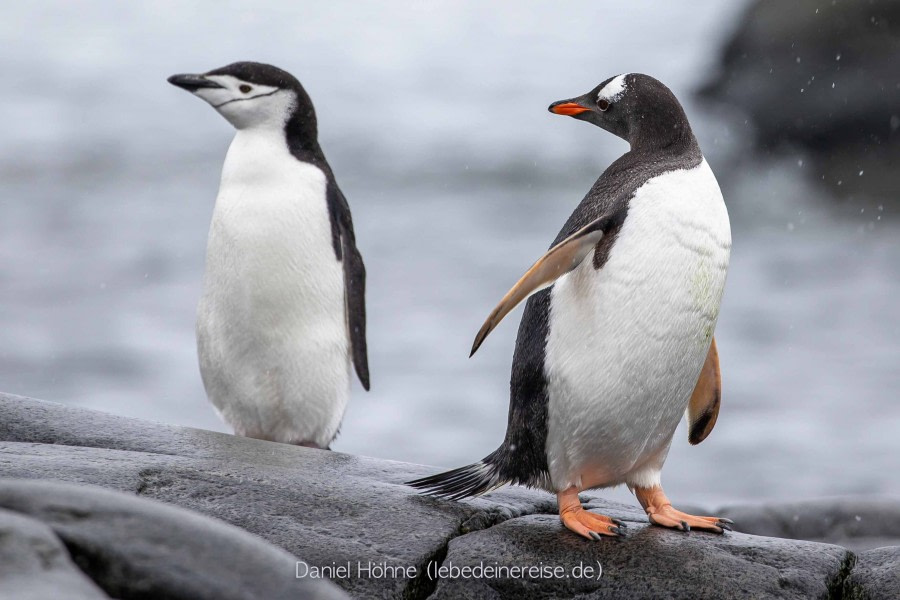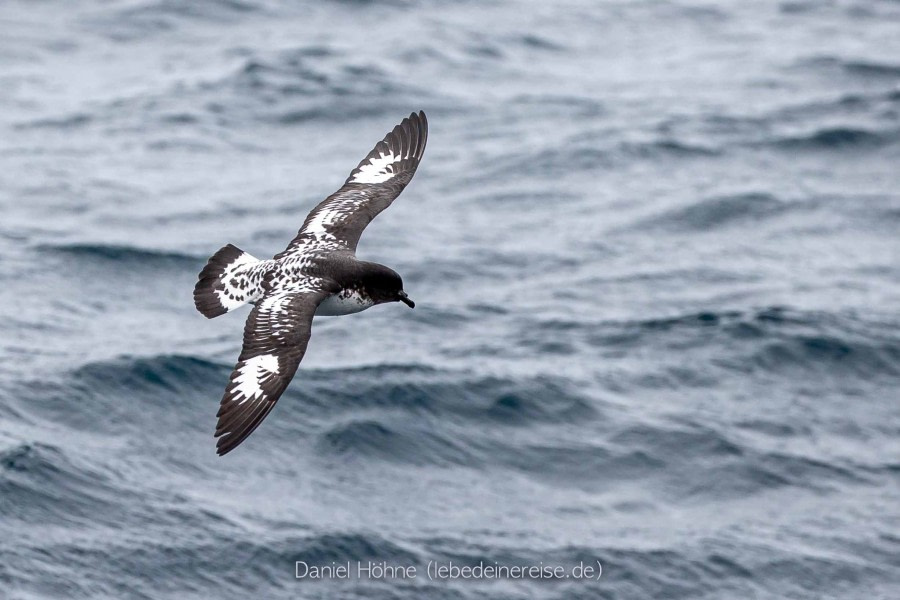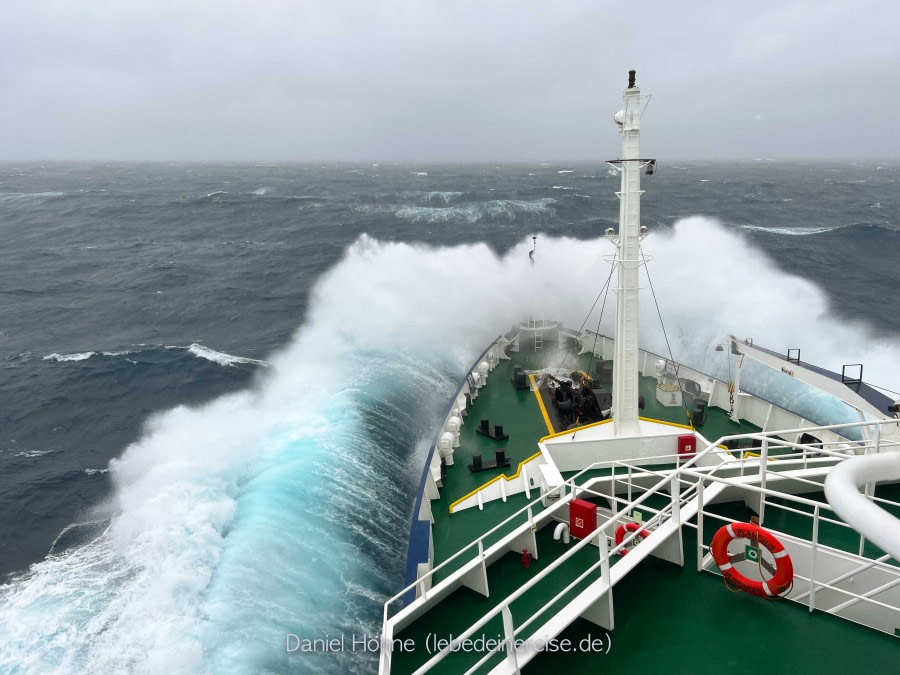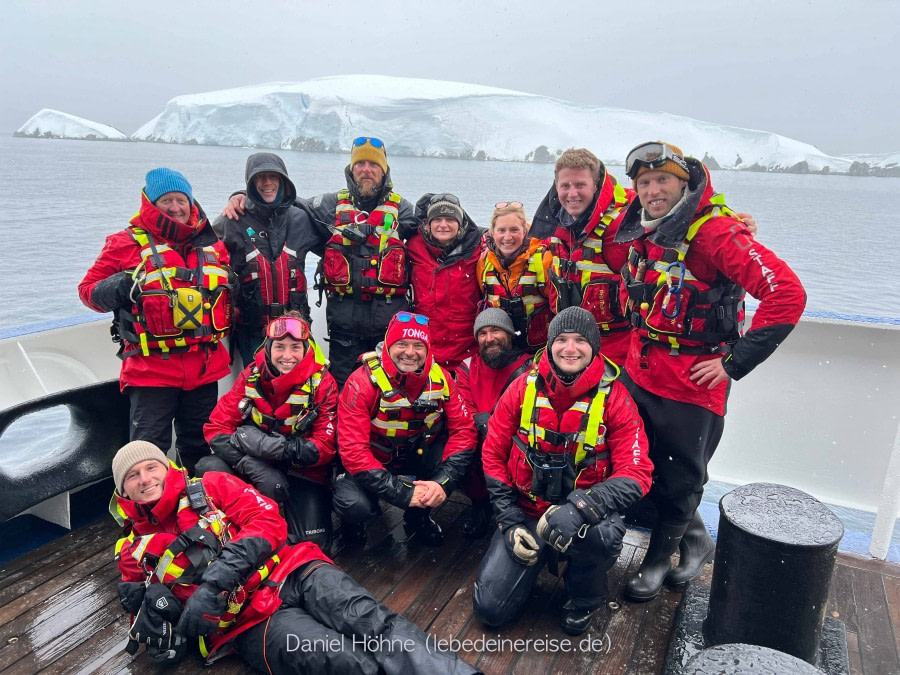| Datum: |
07.01.2023 |
| Position: |
64°40.6’S / 062°37.7’W |
| Wind: |
W2 |
| Wetter: |
rain |
| Lufttemperatur: |
+5 |
This morning we were woken by our expedition leader at 7.15 am, ready for our first day of landings in Antarctica. After being ship-bound for three days due to the Drake Passage crossing and the windy weather yesterday, getting onto the land to move around and experience Antarctica beneath our feet was a moment we were all very excited for.
Out on deck first thing in the morning there was some wind, but thankfully not enough to prevent any landings. There was some low cloud over the mountains with the occasional clearing illuminating a bright patch on the hillside. The scenery was dramatic, and the ice laden mountains were spectacular.
Cuverville Island is a small island adjacent to Rongé Island. From Plancius’ anchor position we could see the high mountains of the Antarctic Peninsula disappearing up into the clouds. The island is characterized by a snow-covered hill with a vertical rocky cliff on one side and a lower angled slope to the top on the side we landed. On this slope there are rocky outcrops hosting many gentoo penguins and their nests.
The morning’s landing was split into two: a landing and a zodiac cruise. The weather was cold for a first landing and certainly turned all those stories that we’ve heard of wild weather on Antarctic expeditions into reality. There was some precipitation and with the added factor of the wind, the cold got through any gap in our layers. During the zodiac cruise we explored some of the large ice bergs that have been blown into the bay. The shapes and the colors of the ice are entertaining as we discussed what animals or landmarks they looked like as well as how the different patterns will have formed. As we moved along the coastline, we saw penguins struggling about on the rocks. This is always entertaining to watch as they slip and trip in such a clumsy manner. However, we were impressed by their agility in the water as they jumped along passed the zodiacs from fishing grounds to colony. Some of us cruised a circumnavigation of Cuverville Island and saw the impressive views into the Errera Channel to the south. The smell of the penguins as we passed down wind of the island is something that we will not forget!
At the landing site it was time to get some steps in to warm up. Along the beach there were many gentoo penguins transporting stones and some returning from a fishing trip. We walked along the waterfront until we reached a good vantage point looking out across the colony. Some of us ventured up the hill slightly, where there were wonderful views back down on Plancius among the ice.
We returned to the ship for a lovely buffet lunch whilst sharing our stores with one another and, more importantly, tried to dry out our clothes ready for the afternoon!
After lunch we didn’t go far, in fact just to the next island along called Danco Island. There was a nice open beach to welcome us where we landed where we could begin our walk onto the snowy slopes. Some of us made it to the summit of the island which is just less than 200 meters. At the summit we had fantastic views in very Antarctic weather! This was the time for a very special moment as two of our guests got engaged! It was certainly a fantastic spot with 360 panoramic views of ice-covered mountains and a sea, scattered with icebergs below.
On Danco Island we saw some empty eggshells lying on the ice. This is from where skuas have stolen the penguin eggs and carried them away from the colonies to eat them. The bright orange-red inside of the egg is interesting to see along with the greeny-blue of the inner egg surface. We have seen many lurking skuas, hanging around and waiting for the right moment to swoop in a take an egg.
Back at the landing site the sleet was still coming down heavily and the temperature was about 3°C, however, today was the day for our polar plunge! Once everyone had assembled at the beach, it was time to remove our layers and expose our skin to the air, sleet and snow. Many of us with our socks on, as recommended by our expedition leader on this rocky bottom, took some wabbly steps towards the icy waters. Even in these cold and windy conditions with the sleet hammering down, it was a good turnout for the polar plunge. This was probably due to the fact that it was likely to be the only chance on the trip.
After a very quick zodiac journey back to the ship we were lucky enough to have a warm shower and a hot chocolate before dinner.
Unfortunately, the wet conditions had not eased much throughout the day and the forecast was unsettled for the night so we were not able to carry out our planned camping. Instead we will have a good sleep in the warmth of Plancius and look forward to tomorrow.
Mountaineering Log
In the morning we attempted to climb to the summit of Cuverville Island via the north-west face. It was raining heavily with moderate wind chill. We made it halfway but turned back at the steepest slope due to avalanche conditions. The snowpack was saturated from the persistent rain and the chances of west slab avalanche was high, so Richard and Dave made the safety call to retreat.
In the afternoon we ice climbed on the glacial ice cliffs found on the west side of Danco. The weather was wet and cold, but this didn’t change our enthusiasm. Richard and Dave had set up three different ice climbs for us to try, so, armed with two ice axes in hand, and crampons on our boots, we all got to try the challenge of climbing the 30 metre (100ft) ice walls.

